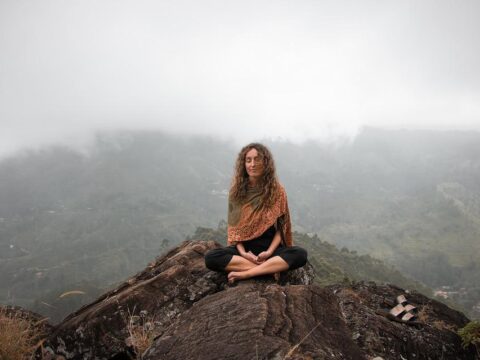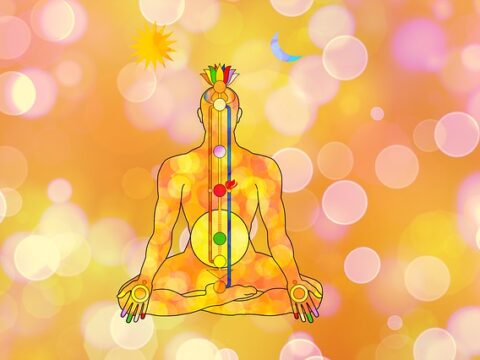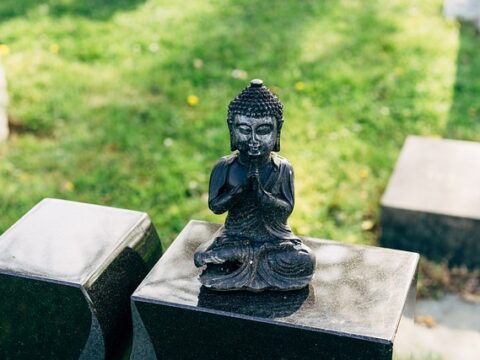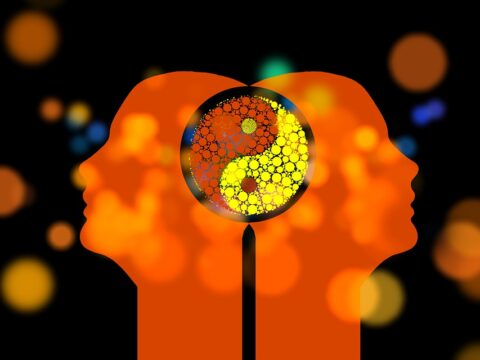Yoga Nidra, meaning Yoga while sleeping, is an ancient meditation technique that’s been practiced for thousands of years. You can do it anytime, anywhere, but most people practice it before bedtime.
When you practice Yoga Nidra, your body and mind relax completely. Letting you enter a deep, sleep-like state of relaxation. It’s like taking a little nap without actually falling asleep.
There’s no scientific proof that Yoga Nidra works. But loads of people swear by it. They say it helps with anxiety, depression, insomnia, stress – all kinds of stuff.
Therapists and doctors even use it to help patients deal with chronic pain, arthritis, and other ongoing health conditions.
It’s one of those things that can’t really hurt to try. At the very least you get to relax for a while. And who couldn’t use a bit more relaxation in their life?
Podcast
https://youtu.be/5wwjJi2h8zg
What is Yoga Nidra?
Yoga Nidra is also called Yoga Sleep. To start, you’ll want to find a quiet, private space where you can be alone and undisturbed. Your own room at home or a private studio room works nicely.
Get comfortable in a seated or lying down position. Sitting cross-legged on the floor or using a pillow for your head if lying down are good options. Avoid distractions like TV or your phone so you can focus.
This video explains more about the Yoga Nidra practice and its effects:
Some people close their eyes during Yoga Nidra to help concentrate on their breath and be present. Using a timer can help track how long you’ve been practicing.
Start with just 1 minute of Yoga Nidra, then gradually work up to 5 minutes as you get comfortable. At 5 minutes, you may notice changes in your mood, like feeling calmer.
If you feel relaxed, keep going. Try another 5 minutes, and continue as long as you’d like. As you practice, you may feel your body and mind slowing down, releasing tension and stress. Your thoughts may slow too.

If you don’t fall asleep, that means you completed the technique. If you do sleep, no problem – just try again the next day. With regular practice, you’ll likely feel calmer, less anxious, and more energized over time.
When ready, combine Yoga Nidra with deep breathing and meditation for even deeper relaxation. You can do this combo anytime, even right before bedtime.
In bed, use your hands to gently squeeze and release each arm to further relieve muscle tension and help you fall asleep more easily.
Origins of Yoga Nidra
Yoga nidra comes from ancient yoga for healing mind and body. The old texts said people have three parts – spiritual, emotional, physical. When sick, mind and body hurt. When healthy, we feel happy and joyful.
Our body is like a machine. Functions fine when in good shape. Acts up when ill. This helps explain yoga nidra. Yoga healed mind and body back then. They said mind’s a river, body’s a bridge. Healthy mind, sturdy bridge. Sick mind, shaky bridge.
Weak bridge lets water through easily. Same for us when ill – negative emotions seep out. No energy makes body weak. Healing needs ample rest. Well-rested body works better.
This sparked yoga nidra. Gotta stop overthinking, take a break. But mind stays busy on daily life.

Can’t rest when worried about daily stuff. Must turn attention to the now. Only way is letting thoughts go, just being. That’s yoga nidra.
In yoga nidra we don’t dwell on past or future. Only here and now. Gives peace and calm. Now we get yoga nidra, so let’s learn how to do it.
5 Yoga Nidra Koshas
Annamaya Kosha
The term Annamaya Kosha is Sanskrit. “Annamaya” translates to “not food” and “Kosha” means “sheath” in English. So put together, Annamaya Kosha actually means “not-sheath”.
But what does this weird term mean for yoga? Well, the Annamaya Kosha, or “not-sheath”, refers to our physical body that we carry around daily. However, the actual energy that animates the body resides in what’s called the Etheric Body.
So to really understand Annamaya Kosha, we need to explore the idea of the Etheric Body.
Here’s a helpful video explaining more about it:
The Etheric Body is said to be a subtle energy field that surrounds and interpenetrates the physical body. It’s essentially the “life force” that energizes the physical body.
So while Annamaya Kosha represents our outer shell, the Etheric Body is the vital force within us. Learning about this concept gives deeper insight into the meaning of Annamaya Kosha.
What is the Etheric Body?
The Etheric Body, also known as the Astral Body. It is the non-physical body that houses all of the energy and life force within us. The Etheric Body is the source of the chi, prana, qi, and kundalini. So, what does this mean? It means that we can channel this energy, and use it to live a better life.
How do we do this? By meditating on a regular basis. That’s it! It’s as simple as that!
Pranamaya Kosha
The Pranamay Kosha is one of the five Koshas, or subtle energy sheaths, that make up the human subtle body according to yogic philosophy.
The Yogis believed everything in our body is composed of five basic elements. So in their view, we have multiple layers to our existence.
There’s the physical body we can see and touch. But there’s also the vital, etheric, astral, and pranamay sheaths that make up our subtle body.
The Pranamay Kosha is this subtle layer that contains the energy behind our entire physical body and its organs and glands. It’s an invisible life force animating us.
This video explains more about the Pranamay Kosha and the other Koshas that are said to comprise our full being:
So in summary, the Pranamay Kosha is the pranic energy field behind the physical body. It’s one of the components of our subtle anatomy according to yogic wisdom. Learning about it gives insight into the multidimensional nature of our existence.

Manomaya Kosha
The manomaya kosha is essentially our mind-stuff – the part of us that thinks, feels, perceives, and believes. It’s our mental functioning powered by intellect and awareness.
This kosha allows us to be conscious of our thoughts, emotions, senses, desires, and intentions. It’s the seat of the mind that makes us who we are.
The manomaya kosha is also the seat of consciousness itself. It gives us the capacity to observe, understand, and experience the world around us. All our knowledge, senses, and perception stem from this realm.
This mental sheath contains everything we are and aren’t. It’s the home of all five elements – air, fire, water, earth, ether. These elements unite to create our senses, body, and psyche.
We’re a fusion of the five elements, five senses, and mind. The manomaya kosha binds all this together as the seat of ego and consciousness.
Our ego is our sense of “I” – who we are, what we can do. It’s our identity. So this mental realm houses our ego, awareness, worldview, thoughts, and feelings.
In essence, the manomaya kosha is the core of our subjective experience. This video explains more about its role in our subtle body:
Vijnanamaya Kosha
The Vijnanamaya Kosha is a Sanskrit term referring to consciousness in yoga philosophy.
Vijnanamaya breaks down as “vijnana” meaning consciousness, and “amaya” meaning the known. So together it represents “the known consciousness” or the knowledge we are aware of.
This refers to our normal waking consciousness – the thoughts, feelings, and perceptions we experience in daily life. We know we are conscious, but don’t fully grasp the deeper awareness behind it.
The Vijnanamaya Kosha represents this surface consciousness we live in, while deeper states exist. It’s our consciousness in action as the mind knows, the brain processes, and the body acts.
Compare it to Jnanamaya, “the knowing which is known.” That represents a deeper meditative awareness we tap into, but don’t access in ordinary living.
So Vijnanamaya Kosha refers to our functional everyday consciousness. The lens through which we experience the outside world. It’s always running in the background as we go about life.
This video explains more about the different levels of consciousness and the Vijnanamaya Kosha’s role:
In essence, Vijnanamaya Kosha is the layer of consciousness that allows us to perceive, understand, and navigate the world we live in. It’s a key component of the yogic map of the human mind and awareness.
Anandamaya Kosha
The Anandamaya Kosha is a Sanskrit term referring to the innermost layer of consciousness in yogic philosophy. It translates to “blissful and immortal consciousness” that resides at our core.
This is considered the subtlest, deepest level of awareness – our true essence beyond all other layers. It’s the source from which everything arises and the highest state of consciousness possible.
This video explains more about accessing higher states through the Anandamaya Kosha:
According to Hinduism, the Anandamaya Kosha is where we are most awake and aligned with pure consciousness. It’s beyond waking, dreaming or sleeping – a state of absolute awareness and restful alertness.
Breaking it down:
- Ananda means “bliss”
- Maya means “immortal”
- Kosha means “sheath” or layer
So “anandamaya kosha” refers to a blissful, immortal sheath of consciousness.
This suggests the Anandamaya Kosha has the greatest capacity for bliss of all the koshas, being closest to pure awareness. Fully developing it is said to attain “jivan mukti” – liberation while still embodied.
In summary, the Anandamaya Kosha represents our deepest core of blissful awareness. In yogic philosophy, it’s the final layer to uncover on the journey toward enlightenment.




